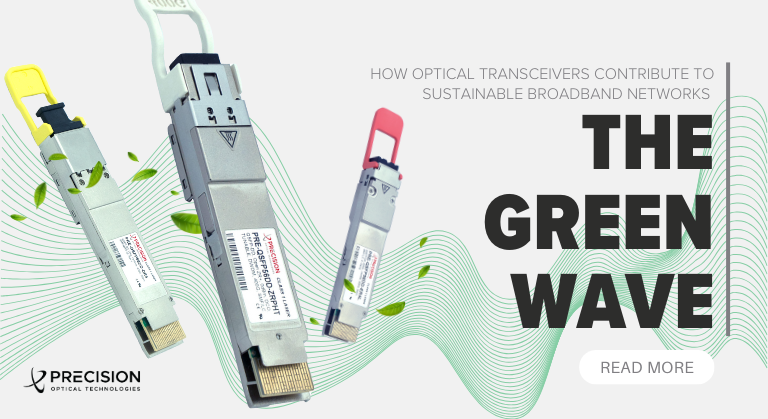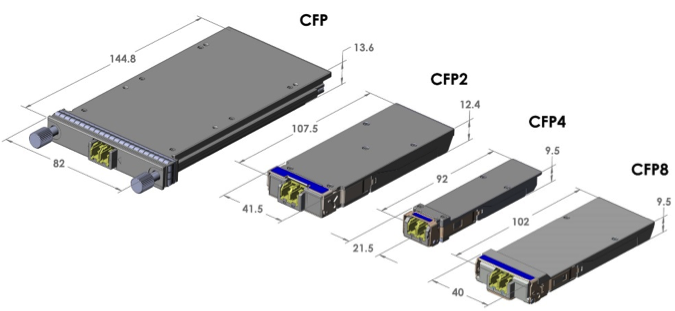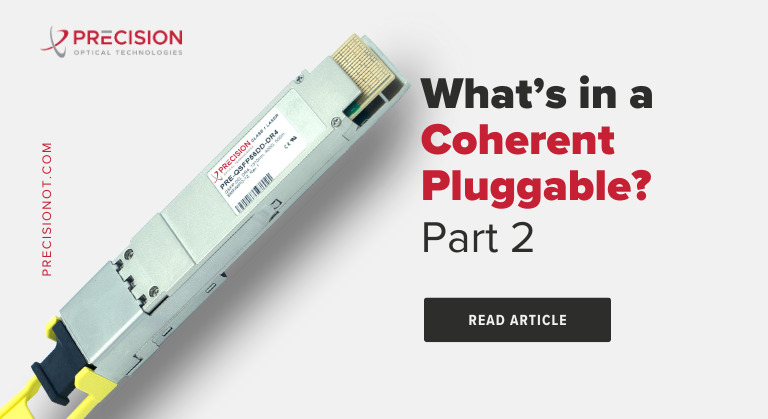
Business Networking Trend 2021: 400G Optical Transceivers

The next generation of optical transceivers is here, which bodes well for networks that needs to meet the growing call to accommodate large-bandwidth applications demanding high throughput and low latency. The continued importance of increasing the capabilities of fiber optic transceivers to accommodate larger quantities of traffic makes 400G optical transceivers one of the top business networking trends of 2021.
In the data center world, interconnects ranging from 10 gigabits per second (10G) to 100G are commonly deployed — but there’s no question that higher-speed capabilities will be demanded by near-future development. Already, data center operators are phasing out lower-speed transceivers of 10G and below. There has been a rapid buildup of “mega” data centers, driven by factors such as wide-area-network telco applications, enterprise augmented reality and the internet of things (IoT), another trending 2021 tech topic. Research points to the adoption of 400G optical transceivers as a fundamental technology to support these facilities.
According to a recent study, the global 400G optical transceiver market is expected to continue to increase in popularity and sales in the coming years, eventually reaching $22.6 billion by 2023. Global internet adoption, online commerce, streaming video, social networking, cloud services and software as a service (SaaS) all play into this business networking trend, as does the availability and cost-effectiveness of both 100G and 400G devices.
Transceivers capable of 400G processing will be smaller, use less power, cost less and even possess more “smarts” than the familiar form factors of today to support the latest enterprise networking trends. Compliant with multiple network standards, 400G transceivers continue the shift away from the utilization of discrete optical components to the design flexibility of pluggable modules. They are capable of distances ranging from very short reach, such as within a data center, to enterprise, metro and long-haul applications. In addition, they can perform over extended voltage and temperature ranges while also minimizing jitter, interference and power dissipation.
At the 2018 edition of the Optical Networking and Communication Conference & Exhibition (OFC), a leading global venue for the discussion of fiber optical transceiver market trends, industry-shaping technologies and enterprise networking trends such as 400G were hot topics.
According to a post-show report, transceiver production is targeted to begin by the end of 2018. The report also notes, however, that cost effectively replacing 100G optics with 400G will necessitate more work on design. Current 400G designs make use of eight channels — double that of 100G modules — which increases cost. The key for cost-effective deployment will be sufficiently increasing baud rate to the same amount of information to be carried over just four channels to meet the growing popularity of the 400G trend.
As always, Precision Optical Technologies is on the cutting edge of developing technology supporting business networking trends for 2021 and beyond, offering forward-looking and future-proofing products to our customers. Learn more about our 400G optical transceivers or contact our experts.






